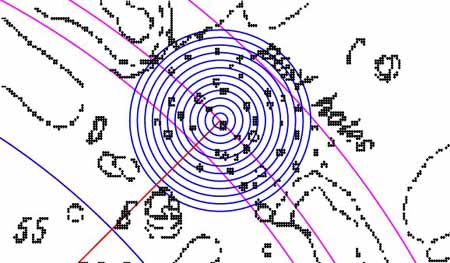
Figure 20: Arrays of former posts dotted this region of the Avenue and were intended as markers for:
(a). The flaring of degree angle lines, which originate at site centre, by 1/2 degree increases.
(b). Marking the radius limits of specifically sized circles, which code lunar, geodetic or other important numbers.
(c). Creating azimuth vectors from site centre, which carry codes in their degree angle reading.
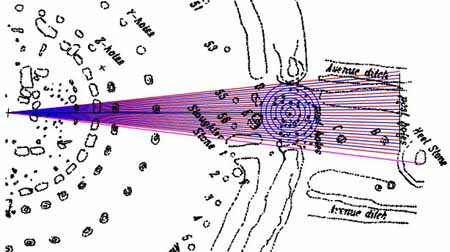
Figure 21: The special calibration circles on the Avenue, flaring lines by 1/2 a degree. Note also that the "circles" represent the "orb" and the comfiguration of the adjacent embankment (top) represents the head of the snake, with mouth ajar to swallow the "orb". This symbolism is found from Continental Europe to North America.
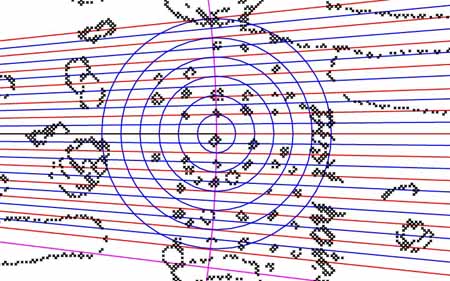
Figure 22: A close-up of the Avenue set of circles. Note how the post-positions demonstrate both lines that flare by 1/2 a degree and circles increasing by 1/2 of a degree (1-degree circle increases shown herein). A magenta circle line, running through the centre of these small calibration circles on the Avenue, has a diameter of 350 feet. The centre of this small set of Avenue calibration circles was the resolving position for making "Precession of the Equinoxes" calculations.
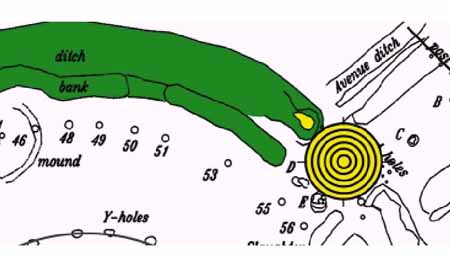
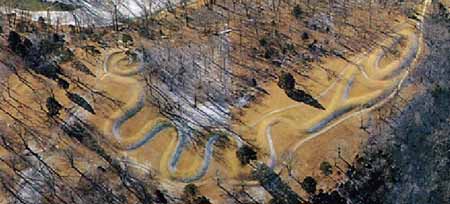
Figure 23: The snake and the orb or egg symbolism displayed on two separate continents. The upper picture is Stonehenge, whereas the lower picture is "Serpent Mound" in Adam's County, Ohio USA. Despite numerous similarities in building styles, symbolism, artefacts, writing, etc., die-hard isolationist archaeologists and historians of the United States continue to deny the possibility of ancient migration and diffusion of culture to North America from Europe and the Mediterranean. The same schools of "isolationists" dominate "allowable" New Zealand and Pacific archaeological or historical interpretation. Such obstructive individuals have held back "scholastic endeavour" for years, world-wide, by cleaving tenaciously to long-obsolete concepts, which they'll never relinquish. Photo courtesy of, The Worlds Most Mysterious Places, Reader's Digest.
FURTHER CODES OF THE AVENUE CALIBRATION CIRCLES.
It has been shown that
the Avenue set of small calibration circles, flare a number of out-running
lines, originating at site centre, by 1/2 a degree increases. The centre post
of the small set of calibration circles resides at an azimuth angle of 45-degrees
and 175 feet from the centre of Stonehenge.
The post positions of the small, Avenue calibration circles also comply to
curved perimeter lines that follow the edges of larger, coded diameter circles
expanding out from site centre. Let's look at a series of these and identify
the intended codes.
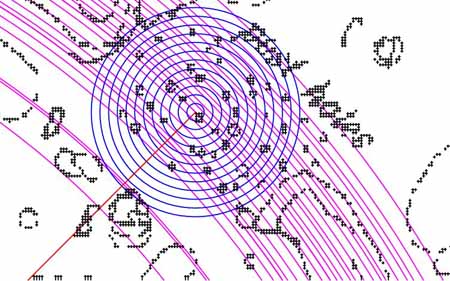
Figure 24: A series of circles, marked by arcs of posts or the edge limits of the Avenue calibration circles, preserve in memory a sampling of the most important numbers and mathematical progressions of antiquity. Here are some, which appear to have been encrypted:.
(1) 192 feet...important sexagesimal progression, which provides a drove of Pyramid numbers.
(2) 189 feet...1/4th of the base length of the Great Pyramid and the size of the grid squares of the Giza Plateau. There was copious usage of this number anciently, including as an incremental value to describe the duration of the 18.613-year lunar nutation cycle (calibrated to 6804-days ÷ 189 = 36 lunar periods of 189-days). Equally, 16 lunar years, calibrated under their system to endure for 5670-days ÷ 189 = 30 lunar periods of 189-days.
(3) 187.5 feet...a very important septimal/ decimal progression, which provided important azimuth angle and navigational numbers, including many applicable to the "11 series" (league & furlong) geodetic system.
(4) 18.66666 feet...1/3rd of 56 and used in progressions of 7 & 8. Also functional within "weights & cubic measures" numbers like 2240. The 56 series was of extreme importance to Sabbatical calendar and lunar calendar day counts and computations.
(5) 183.33333 feet...this is 1/3rd of 550 feet, which was highly important to the "11 series" geodetic, navigational system.
(6) 182.625...used to describe the number of days between equinoxes.
(7) 181.44...a Great Pyramid number and expressing 362.88 feet in the full diameter of this Stonehenge circle. The Great Pyramid was 36288 inches in its base perimeter value under its sexagesimal assignment. The length of 36288 feet represented 1-degree of arc for the "ring of the Earth" under the sexagesimal geodetic system.
(8) 180 feet...everything from degree angles to increments within the "Precession of the Equinoxes" calibration.
(9) 178.5...or 357 feet for the full diameter. The Menkaure Pyramid was assigned a base length value of 357 feet when computations of the Sabbatical Calendar system were being applied. This referred to 357-days (12.75 months of 28-days each). A similar system was used on the Aubrey Circle, using the 56 posts as counting positions, to an accuracy of 3.408 hours in 49-years. The manual count system allowed ancient society to enter into their Jubilee Year (50th) with everything fully corrected and running true to the solar cycle.
(10) 178 feet or more literally, 177.9937985 feet...the diameter of "Y" Holes and 1/2 the base length of the Menkaure Pyramid under its PHI assignment. This Stonehenge circle's full diameter would, therefore, be in deference to Menkaure Pyramid.
(11) There appears to be an expression of 176 feet, which would refer to the "mile" related measurement and progression.
(12) There is a 175 feet radius circle, inasmuch as the small, Avenue set of circles are centred on a position 175 feet out and at an azimuth angle of 45-degrees from the centre of Stonehenge.
(13) 170.1 feet...this is an important increment in the lunar determinations for both the 18.613-year (6804-day) nutation cycle, as well as the 16-lunar year (5670-day) calibration.
(14) 168.75 feet...another value useful to lunar computations.
(15) 168 feet...this is one of the most important circles of Stonehenge, which designates the crown of the embankment and was used extensively for 3,4,5 triangulation onto the alighting or ascending positions of stars. The merits of this circle will be explored in depth as we proceed.
(16) 166.66666 feet...clearly marked and a very important number in 3,4,5 triangulation, where the "adjacent" is 1.6666666 less than the "hypotenuse".
(17) 165 feet...this measurement is the basis of the rod & perch measurement (16.5 feet), as well as the league (16500 feet). This radius at Stonehenge is also 30 fathoms. Alternatively, 165 feet X 4 = 1 furlong. It is also 1/32nd of a mile.
We will now explore the codes found within circle diameters, as well as azimuth angles onto components, inward from the Avenue set of small calibration circles.
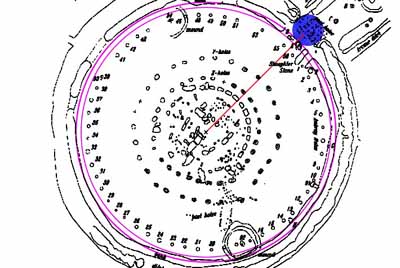
Figure 25: The larger of the magenta circles shown is exactly 314.16 feet in diameter and was intended to code PI (3.1416). Note how it coincides well with the earthwork, inner edge of the embankment. The "PI" circle is also marked by 3 stone components, 2 of which reside at the Avenue entrance and another near the equinox rise line to the east of the site. The 2nd circle has a radius of 151.2 feet and this is a Great Pyramid value. The diameter of this circle is 302.4 feet and the Great Pyramid was 3024 feet in perimeter around its base under its literal, sexagesimal length assignment. This Stonehenge 302.4 feet diameter circle is also clearly marked by both earthworks and stone components on the eastern side of the site. It is further marked at the Avenue entrance by components there.
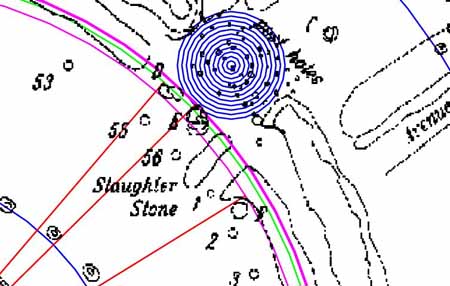
Figure 26: Three vectors (red) are shown to align onto component stones of the Avenue. Their azimuth angles are 40.5, 45.3049492 & 58.333333-degrees respectively. The 40.5-degree vector codes a lunar progression and produces many of the main numbers used in lunar cycle calculations. This vector resolves upon a position to the northern side of an Avenue component, at a distance of 57.6 Megalithic Yards from site centre. The 2nd vector, on an azimuth angle of 45.3049492, codes the PHI height of the Great Pyramid (168 MY or 453.049492 feet). It also resolves upon the 57.6 MY circle or the one related to PI, set 157.08 feet from site centre. The PI circle brushes the outer face of the same marker stone. A 3rd vector is set to an azimuth angle of 58.3333333-degrees. This strange value occurs from Egypt to Britain. The angle of the Great Pyramid @ 51.84-degrees X 58.3333333 = 3024 (the perimeter value of the Great Pyramid...3024 feet). The 58.333333-degree vector resolves to a circle of 151.2 feet radius. This means the diameter of the circle was 302.4 feet, in homage to the base dimensions of the Great Pyramid.
Note also that the circle being interpreted to relate to 314.16 feet diameter (PI...3.1416), would also have related to 315 feet in a simultaneous dual coding.